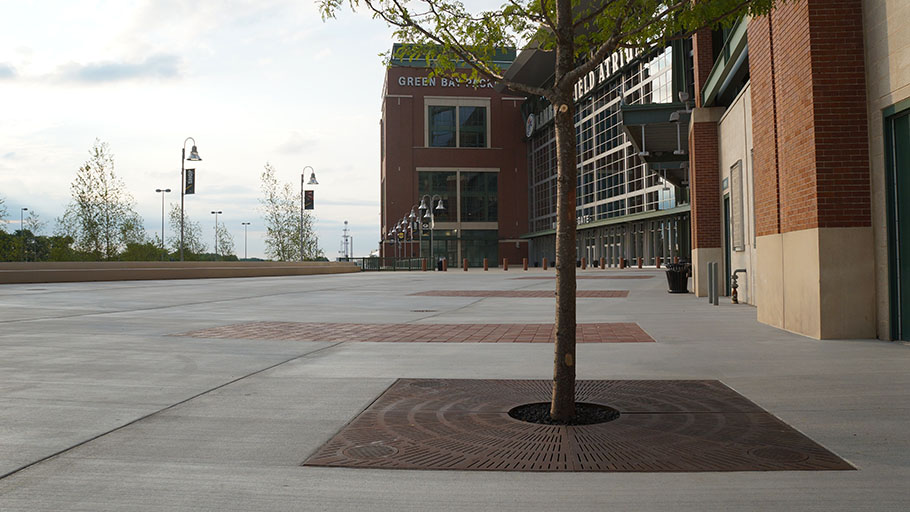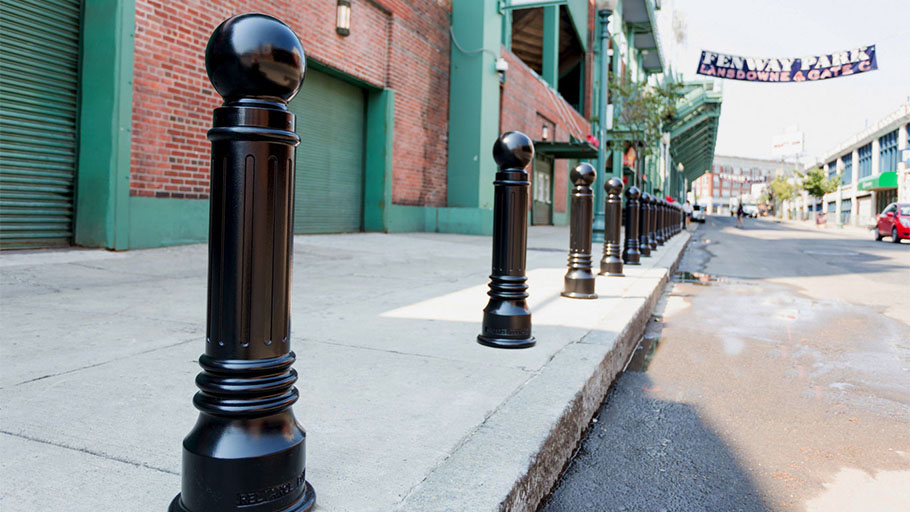How to protect and maintain sidewalk and boulevard trees in your community
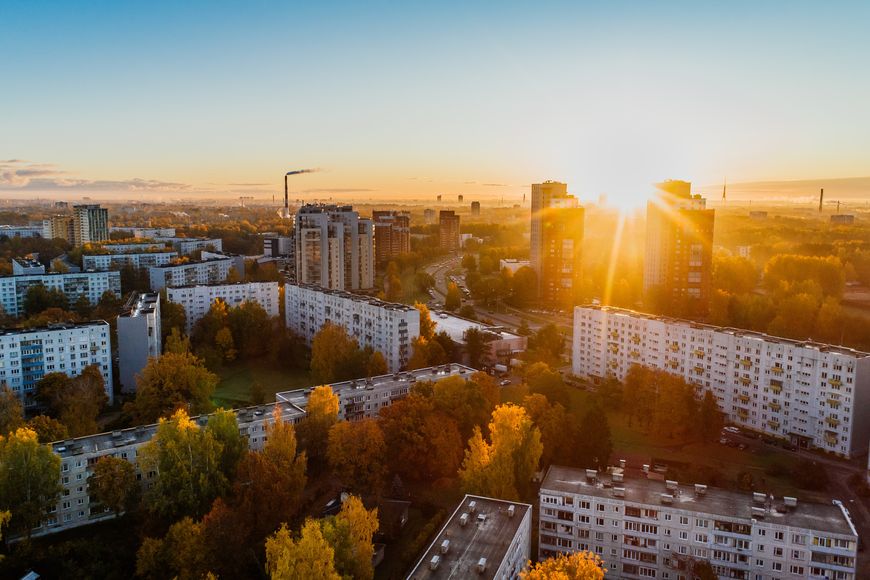
When was the last time you went for a walk in the “concrete jungle” in your city? Add a bit more of the “jungle” into your community by planting some community trees. These trees need a little support to grow and thrive in urban landscapes.
When choosing how to protect trees on sidewalks, boulevards, and plazas you have a choice: tree pits vs tree grates. Which should you choose? Which is easier to maintain? Which is more cost-effective?
Support for urban forests
Greenery in urban centers goes way behind aesthetics. A study from the World Health Organization (WHO) shows that regular access to natural green spaces has a positive impact on our physical and mental wellbeing. With chronic stress and depression becoming more common, green spaces are even more important for the well-being of our communities.
Our connection with nature has restorative mental health benefits. When you have attractive landscaping in urban centers, it helps balance the human-made elements (concrete, asphalt, machines, and equipment) with natural elements (trees, flowers, grass, and bushes).
The WHO report provides evidence that exposure to green spaces in cities is linked to:
- improved social capital (fosters social interaction and promotes a sense of community)
- improved immune systems
- enhanced physical activity (including improved fitness and reduced obesity)
- anthropogenic noise buffering and production of natural sounds
- reduced exposure to air pollution
- reduction of the “urban heat island” effect (plants and trees help absorb heat in busy cities)
- optimized exposure to sunlight (which can improve sleep quality)
A study in the United States found that neighborhoods with more greenery in public spaces experienced lower levels of depression and stress amongst residents. Regular access to green spaces shows positive effects on the cognitive development of children too.
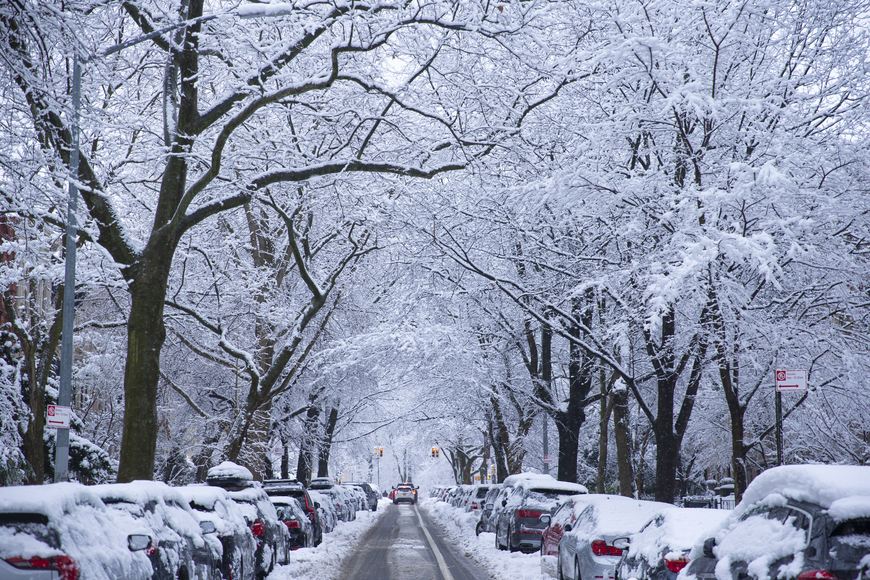
Why protect sidewalk trees?
Cities are busy, stress-filled places. But to plant trees in plazas and sidewalks, we need to provide protection against regular heavy foot and vehicle traffic.
The most common risks to trees that line our sidewalks include:
- being hit by car doors opening
- people kicking or bumping into trees
- people stepping on the soil surrounding the tree and disturbing sensitive root systems
- being hit by cars who drive over the sidewalk (yes it happens!)
- not enough drainage for proper watering
We need to protect trees because they also play a valuable role in flood management. Specially designed tree grates that span longer sections along the sidewalk, help with water and air flow. This rainwater runoff can be diverted from ending in the storm drains, to providing nourishment for the trees. And, twisting tree roots in the soil, provide space for extra water to permeate the soil, helping to manage flooding on streets and sidewalks.
Requirements for tree pits vs tree grates
Whether you choose tree pits or tree grates, they both must meet similar requirements. Tree pits or grates must:
- endure weathering
- endure heavy foot traffic
- look good and match the aesthetic of the community
- protect the tree from damage
- support natural tree growth
- allow space for tree growth
How to choose: Tree pits vs Tree grates
With your requirements in hand, you can now choose between tree pits vs tree grates. Each has great benefits and comes with cautions as well. Using the wrong kind can have drastic effects on your landscaping and maintenance budgets as well as the aesthetic of the landscaping and surrounding areas.
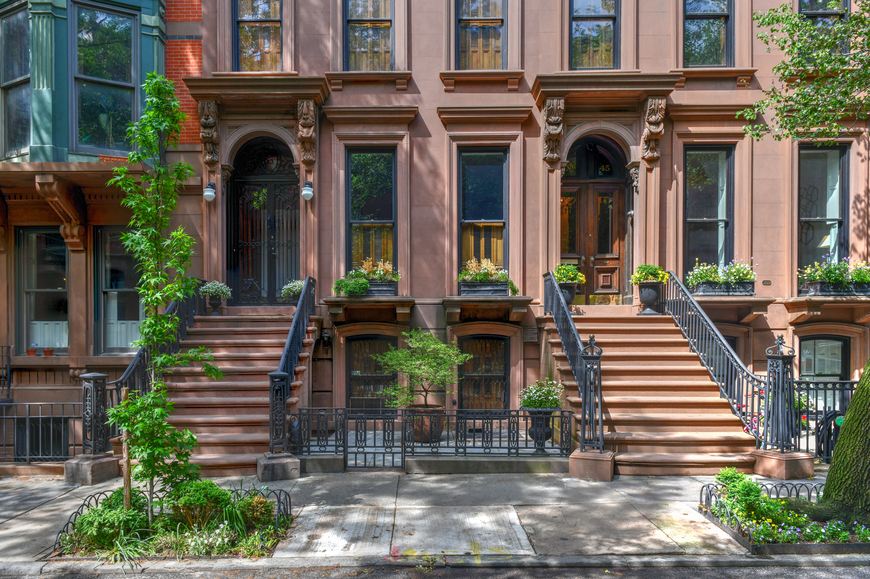
What are Tree Pits?
Like its name suggests Tree Pits is a large pit you put a tree in. They are often installed with root barriers to encourage the tree to root downwards. The exposed soil at ground level makes a great be for flowers or low-laying bushes.
Benefits of Tree Pits
- Provides additional space to diversify and add additional foliage and flowers
- Encourages root growth down and not across (which could cause cracking in adjacent concrete)
- Often best for larger trees in plazas
Cautions
- Requires a larger footprint
- Requires more landscaping and maintenance of surrounding soil and any additional bushes or plants
- Litter removal and garden bed upkeep means higher ongoing costs
- Not ideal in areas with heavy foot traffic
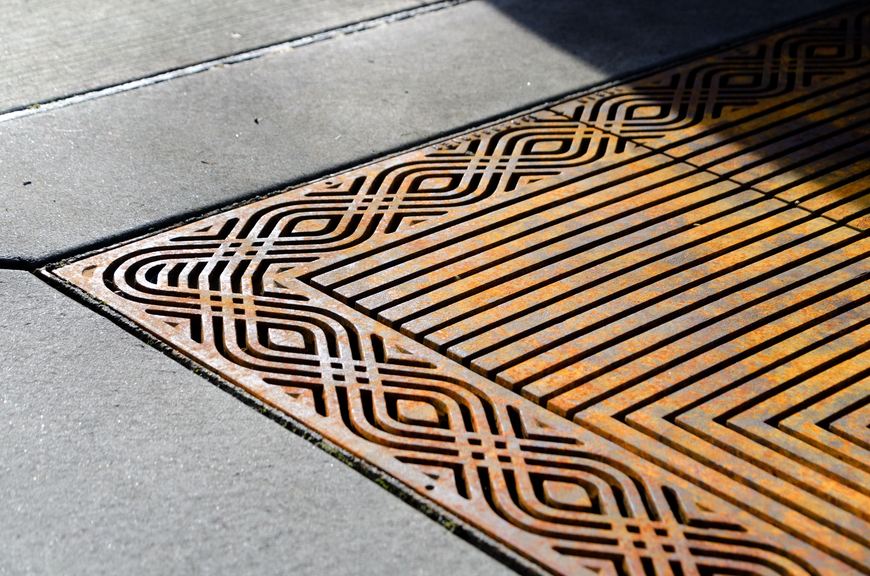
What are Tree Grates?
Tree Grates are often iron covers placed around the trunk of the tree to provide protection for the soil. They come in various sizes and patterns and are bolted together.
Benefits of Tree Grates
- Endures high foot traffic
- Promotes air circulation and easy rainwater access for healthy tree growth
- Provides a sophisticated element to any cityscape
- Ideal for smaller-trunked trees
Cautions
- You may have to replace or modify grates as the tree expands and grows
- More difficult to clean litter that falls between the grates
- May require an adjacent bioswale to ensure proper irrigation and root growth.
Your choice may be heavily influenced by the type of tree and where you plan to plant it. For example, larger trees that are projected to provide a canopy of 30 feet, require 1000 cubic feet of uncompacted soil for the healthiest growth. This is not ideal for a sidewalk but might work better in a city park or larger plaza. In those cases, a tree pit may work well.
Smaller-trunked trees can thrive well when planted on sidewalks when a pit grate and adjacent bioswale are used.
Aesthetical considerations when choosing tree pits vs tree grates
Both tree pits and grates need to be functional and look good too. The WHO report talks about the importance of the aesthetic of green spaces. They cited an Australian study that found higher levels of walking were associated with more attractive public open spaces when compared to less attractive open spaces.
The WHO report also suggests that aesthetically pleasing landscaping is linked with less violence, graffiti, vandalism, and litter in the area too.
Which will you choose?
There are many considerations when choosing tree pits vs tree grates. Both can be great for tree growth (depending on the tree species) and are designed to create outdoor green spaces that are functional and attractive.
Choose the right tree protection based on where your tree will be planted (sidewalks/boulevards or plazas and city parks), and the type of tree you’re planting.









